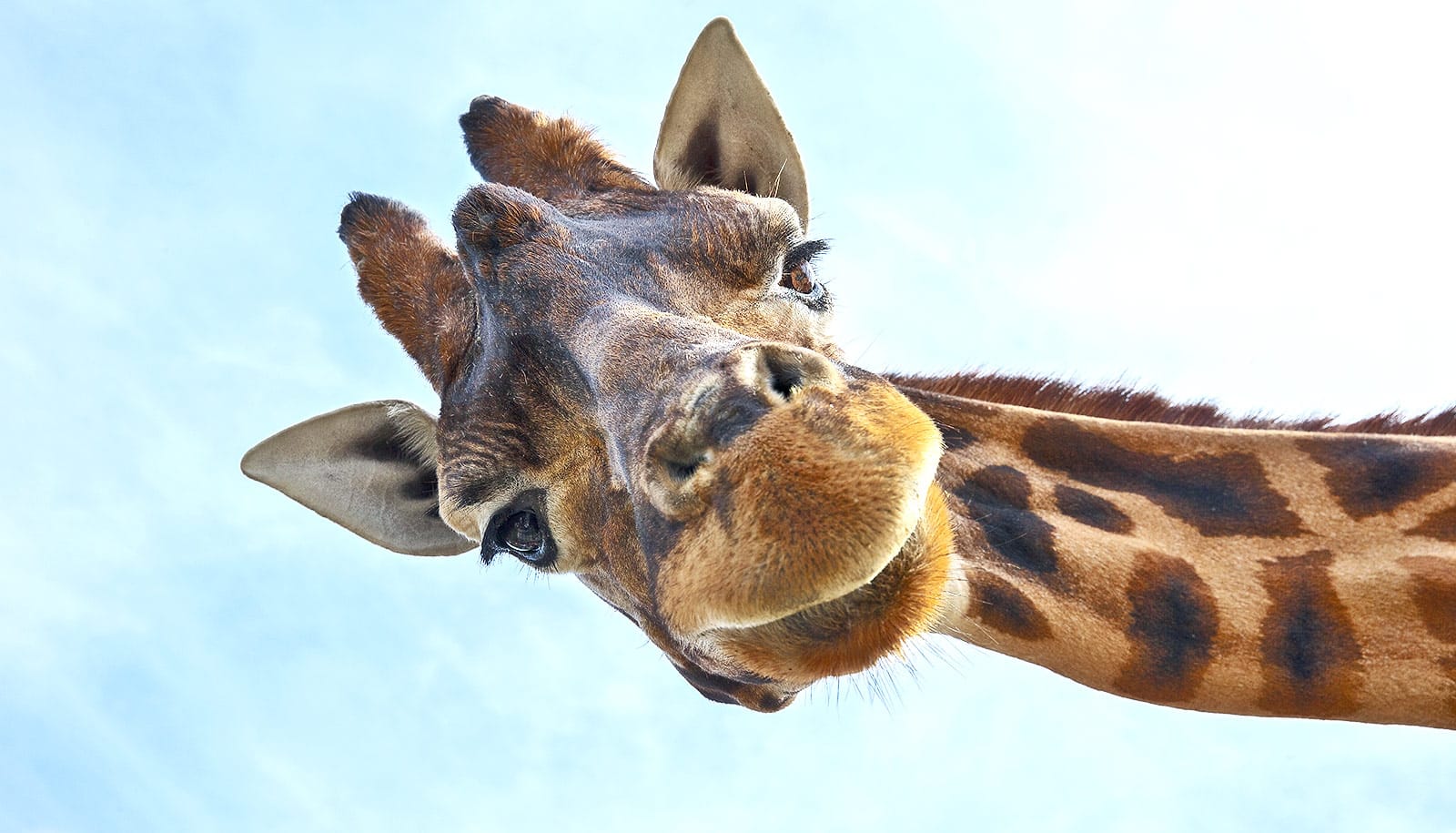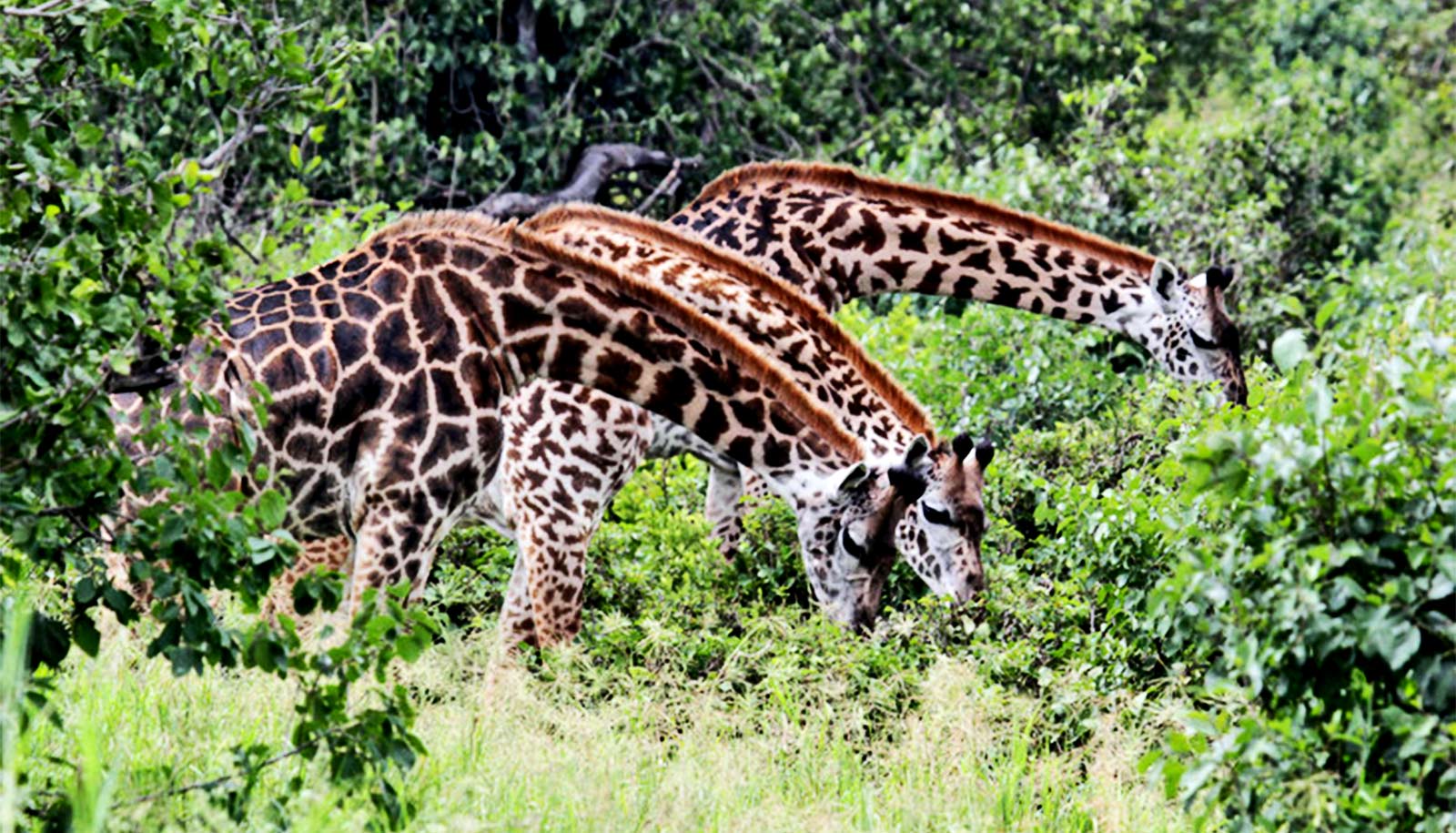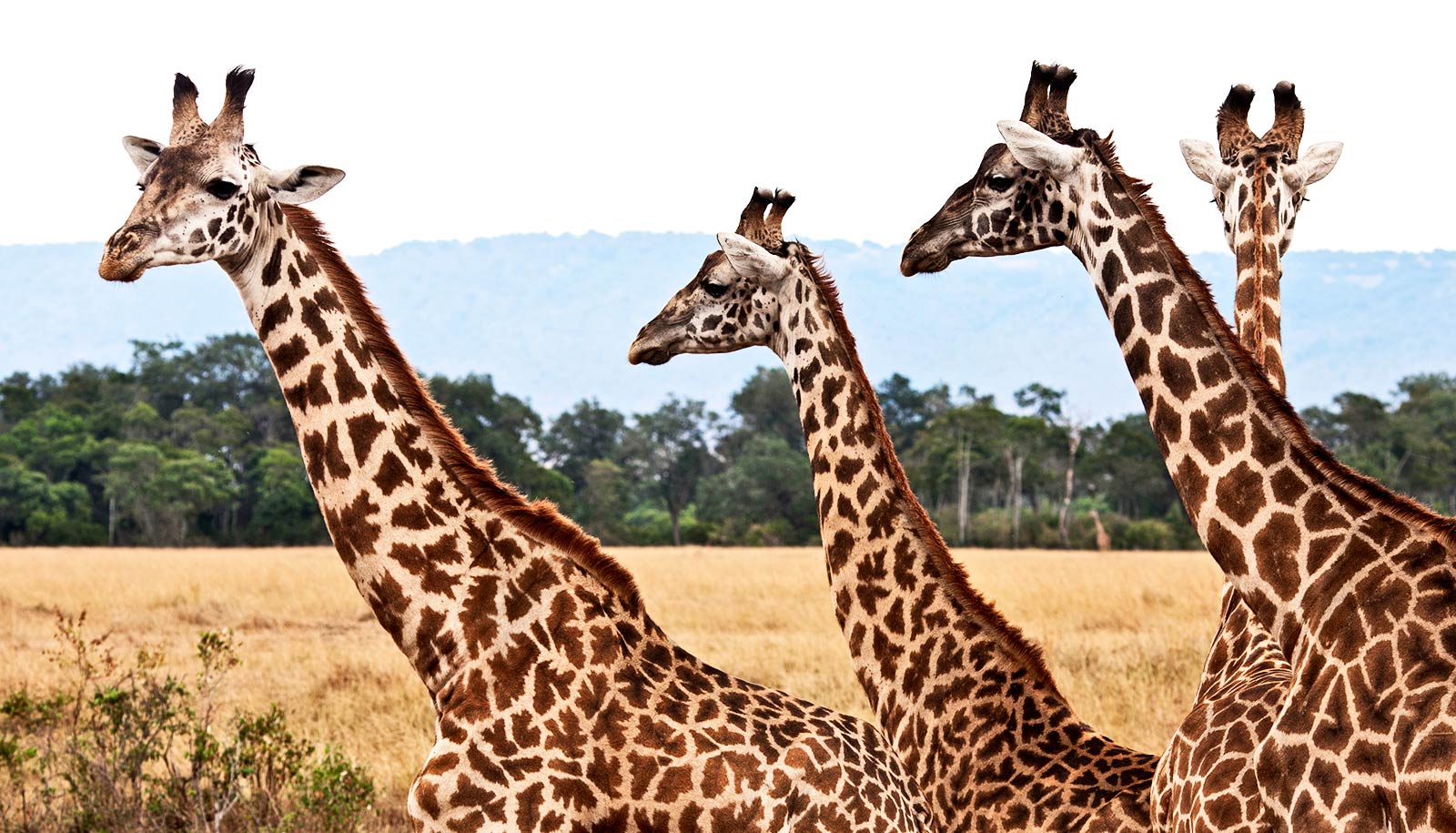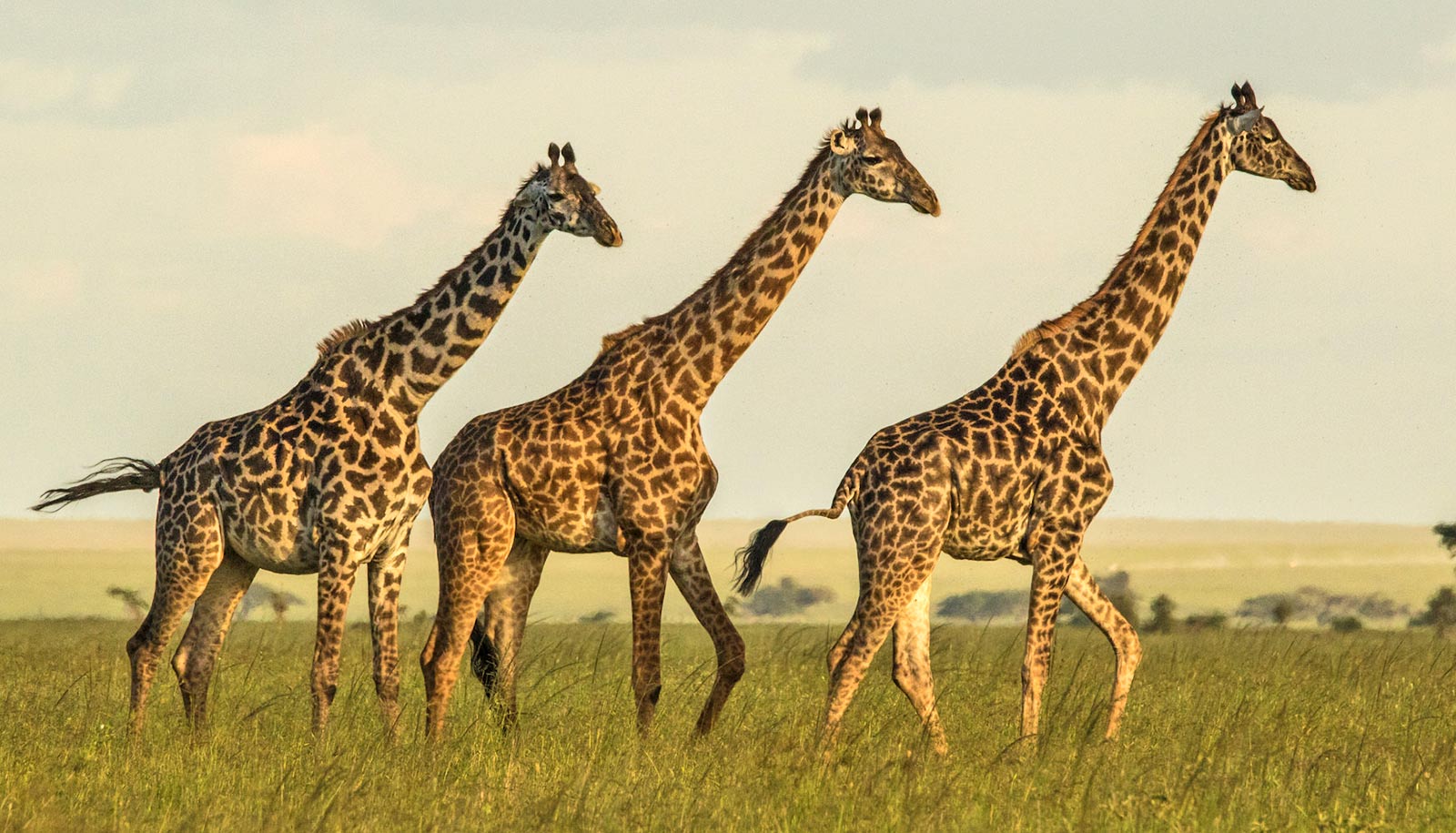New research provides insight into the unique sex lives of giraffes, their reproductive behavior, and how their anatomy supports that behavior.
It can be hard to know if someone is really into you. Sometimes, you get hints—a certain look or smile, a nervous blush, or flirtation. Giraffes get none of that.
They have no set breeding season. They don’t go into heat, like dogs or cats. They don’t make mating calls or provide visual cues of sexual readiness. So how is a male giraffe to know his advances will be well-received? In short: pee, pheromones, and a gentle nudge.
The new study in the journal Animals describes how male giraffes test females for sexual receptivity.
First, the bulls provoke the females to urinate by nudging them and sniffing their genitalia. If the female is open to his invitation, she widens her stance and pees for about 5 seconds while the male takes the urine in his mouth. He then curls his lip, inhaling with an open mouth—an act called flehmen that transports the female’s scent and pheromones from his oral cavity to the vomeronasal organ.
The study provides the most precise understanding yet of how flehmen occurs with giraffes’ anatomy. While flehmen is common among many animals, including horses and cats, most mammals wait until urine is on the ground to investigate. The giraffe, however, is not built for such explorations.
“They don’t risk going all the way to the ground because of the extreme development of their head and neck,” says lead author Lynette Hart, a professor of population health and reproduction in the School of Veterinary Medicine at the University of California, Davis. “So they have to nudge the female, effectively saying, ‘Please urinate now.’ And often she will. He has to elicit her cooperation. If not, he’ll know there’s no future for him with her.”
Hart and her coauthor and husband, Benjamin Hart, professor emeritus with the School of Veterinary Medicine, witnessed this behavior on multiple research trips to Namibia’s Etosha National Park.
Dotted among the park’s western side were large watering holes, where dozens of giraffes would congregate. Lynette called it “a dream come true” for observing giraffes. “So often you see a few in the distance, not an up-close view of what they’re doing,” she says.
Benjamin Hart had studied how flehmen behavior worked within the anatomy of other animals, including goats. During their trips to East Africa, the Harts suspected a similar process was underway for giraffes.
“This is part of their reproductive behavior,” Benjamin Hart says. “This adds to our understanding of what giraffes are doing as they accumulate around a water hole. People love watching giraffes. I think the more the public understands about them, the more interested they’ll be in their conservation.”
The Harts also describe in the study previously undocumented giraffe behaviors, from chewing bones to potentially mourning their dead:
- Earlier studies noted that osteophagia, or chewing bones, was unusual for giraffes. But the Harts observed many instances of giraffes seeking and chewing bones, and sometimes getting them lodged in their mouths.
- After a giraffe had been killed by two lions, the Harts also witnessed for several days a steady procession of giraffes arriving to investigate the body.
- The Harts experienced another significant observation when they heard a bull emit a loud growl on different occasions. It was most likely a warning call, as it drove away most surrounding giraffes. Giraffes are typically very quiet and were once even thought to be mute.
The research received no direct external funding. Financial assistance for travel and accommodations was provided by UC Berkeley’s University Research Expeditions Program.
Source: UC Davis



